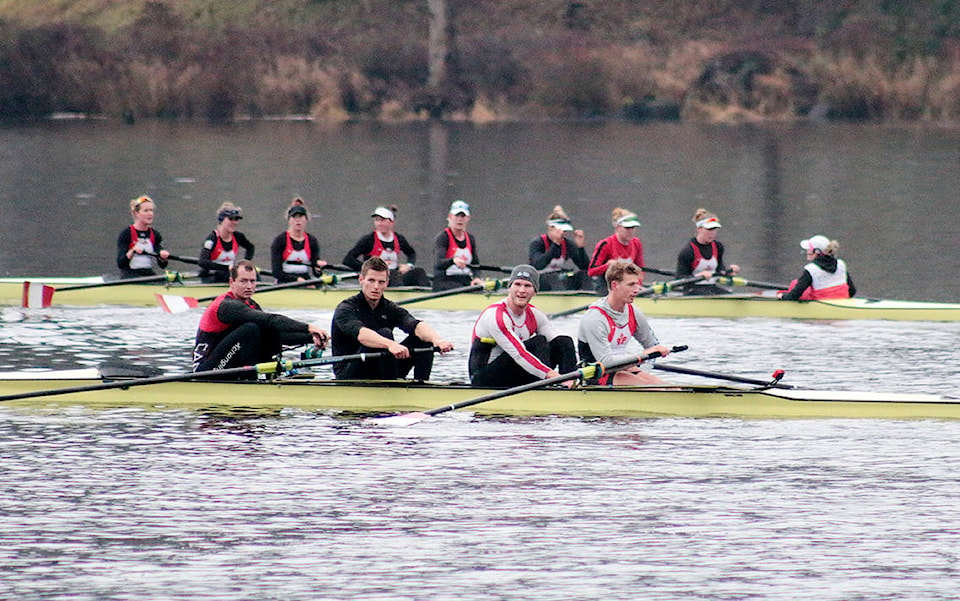Quamichan Lake has been busy in recent months as Rowing Canada prepares for the 2020 Olympic Games in Tokyo.
The national men’s program did extensive training on the lake that culminated with selection trials on Dec. 12 and 13 to help pick the Olympic team. The following week, Rowing Canada had 50 athletes using the lake the Kinsmen hut at Art Mann Park for an assessment series ahead of upcoming Olympic and Paralympic selection camps.
They were back on the lake again on Jan. 7 to do some selection and rating work for the women’s program.
“We’ve been on Quamichan Lake quite a bit,” said Iain Brambell, Rowing Canada’s high performance director.
While Rowing Canada is still based out of Elk Lake in Saanich, Quamichan and Shawnigan lakes are regarded as satellite training centres, with Quamichan especially useful for selecting teams.
“As of late we’ve been doing a fair bit of selection work,” Brambell said.
Rowing Canada trained on Quamichan ahead of the 2019 World Championships, which were qualifying events for the 2020 Olympics and Paralympics in Tokyo. And last summer the national junior team trained on Quamichan Lake for almost a month, staying at Queen Margaret’s School, in preparation for the World Rowing Junior Championships that served as the test regatta for the Olympics venue.
Some 50 or 60 athletes will be involved in selection camps for the 2020 Olympic and Paralympic teams, which will take place mainly at Elk Lake, but also at Shawnigan and Quamichan. There will also be selection work for World Cup events, which will be final qualifiers for the Olympics and Paralympics.
The three lakes offer different advantages, Brambell explained.
Elk Lake has more support for the athletes on the water, as well as sport science and sport medicine programs based out of the Pacific Institute for Sports Excellence, where they also do indoor training. Shawnigan offers 7 km of open water where they can row continuously for endurance training, particularly during the winter and early spring months. And Quamichan provides a year-round 2000m course, longer than Elk Lake, where boats have to turn repeatedly to cover that distance. There is also the rapport that has developed with the local government and people.
“We’ve got a great working relationship with [the Municipality of North Cowichan] and the community,” Brambell said.
Rowing Canada is still in the process of establishing a permanent national training centre on Quamichan Lake, and more is expected to get done after the Olympics and Paralympics are over. According to Ernie Mansueti, North Cowichan’s general manager, community services division, park, building design and Rowing Canada funding need to be completed next.
